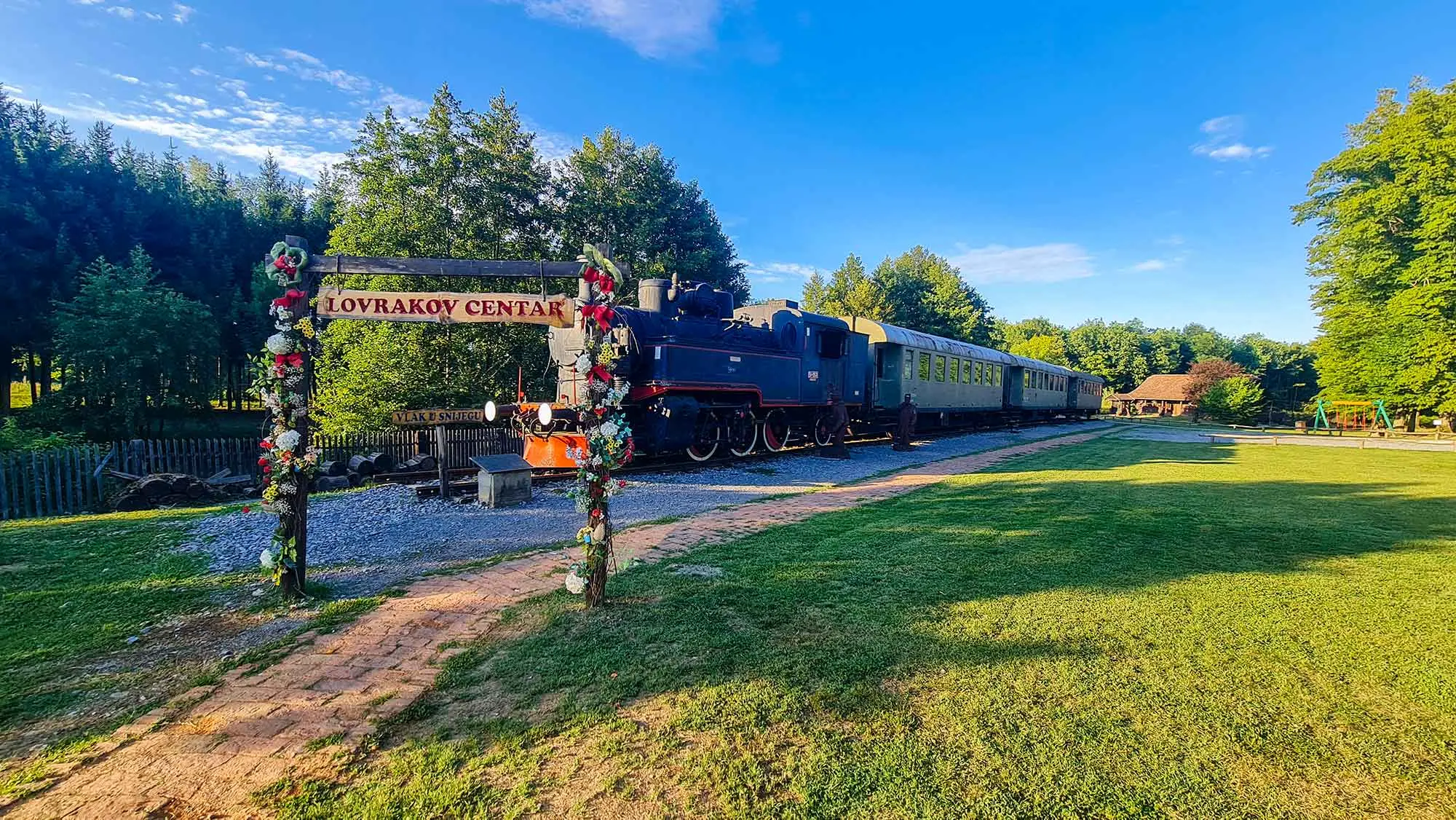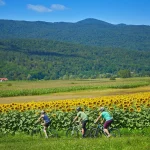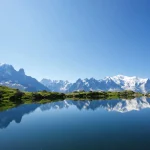We visited the Mato Lovrak Cultural Center! This is the place where childhood becomes reality…
Somewhere between the rolling hills of Bilogora, where the Grđevica River winds its way through shaded meadows and fields, lies a village that has left a deep mark on Croatian literature.
We ended up there quite by chance, in the middle of the week, heading toward Virovitica for reasons that had absolutely nothing to do with this place. And yet, it felt as if something gently pulled us off the main road and straight into the world of childhood.
Veliki Grđevac is not just the birthplace of Mato Lovrak. It is also a place where his books stop being ink on paper and come to life. Here you are greeted by a real train, a creaky wooden mill that works, and a trail that not only leads you through nature but speaks of friendship, togetherness, and a time we may have nearly forgotten.

Mato Lovrak Cultural Center, Photo: Adria.fun
Mato Lovrak, born in 1899, was not only a writer but also a teacher who did not believe in fear or strict discipline. He believed in children’s curiosity and cooperation. He was one of those who understood that children were capable of grasping more than adults often allowed. His writing reflected that belief. In novels such as Družba Pere Kvržice and Vlak u snijegu, children do not wait for adults to solve their problems. They rebuild a mill, rescue a train, cooperate, help one another, and trust each other. These stories were not fairy tales. They were moral lessons set in real landscapes among real and recognizable people.
Today, those very stories welcome visitors to the Lovrak Center.

Mato Lovrak Cultural Center, Photo: Adria.fun
The first thing you notice upon arrival is a steam locomotive from the collection of the Croatian Railway Museum. It is not the exact train used in the film, but it is the same model as the one featured in the 1976 adaptation of Vlak u snijegu, directed by Mate Relja. It is the kind of train that Draga, Ljuban, Pero, and the rest of the children from Veliko Selo took to Zagreb. The train is currently awaiting restoration, so for now you can only view it from the outside. Once it is reopened to the public, it will once again bring scenes from the film to life and remind new generations of the strength of unity. Standing beside it, you almost expect the children to step out of the wagon at any moment, ready for another adventure.

Mato Lovrak Cultural Center, Photo: Adria.fun
Just a few steps away, beside the murmur of the stream, you will find a wooden mill. Its exterior looks almost exactly as Pero Kvržica and his gang imagined it in the book. But what makes this mill special is not just how it looks, but what it holds inside. On the ground floor is a small ethnographic collection. In this modest yet dignified space, objects from everyday life in the early twentieth century are carefully arranged. Old irons heated with embers, foot-powered sewing machines, ceramic and wooden kitchenware, handwoven tablecloths, and wardrobes still carrying the scent of times past. Each item tells a story, shaped by someone’s hands, someone’s habits, someone’s past. This collection does not merely illustrate Lovrak’s books. It confirms them. It shows that the characters in his novels lived real lives, in real homes, with real tools, in a real place.
- Kulturni centar Mato Lovrak (Mato Lovrak Cultural Center), Photo: Adria.fun
- Kulturni centar Mato Lovrak (Mato Lovrak Cultural Center), Photo: Adria.fun
Next to the mill is another interesting feature of the center, and that is the Nature’s Friendship Trail. Opened in 2022, it was designed for children as a space for play and learning. It is divided into four themed zones, from a summer classroom and a natural amphitheater to areas dedicated to birds and floodplain forests. Wooden pavilions, educational panels, hanging elements, and resting spots allow visitors to learn by being in contact with the natural world. All of this is part of a broader vision in which nature is not just a backdrop but an active participant in childhood, just as Lovrak saw it himself.
And when all that walking, thinking, and immersion in story reminds you that you are still in the real world and quite hungry, there is a solution nearby. Right in the center, beside the water, is the Stari mlin bistro. This is far more than just a place to eat. It offers a break and a feeling that you are in the right place at the right time. The food is simple, seasonal, and authentic, served with the sounds of nature, without hurry or noise. The prices are excellent. We paid only seventeen euros for two plates of ćevapi, one sparkling water, and a dark radler.

Mato Lovrak Cultural Center, Photo: Adria.fun
We hear they offer great Sunday lunch deals as well, so we will have to return for a more complete review of the restaurant.
The centar is made for families with children, so if you find yourself nearby, make sure to stop.






Leave a Reply